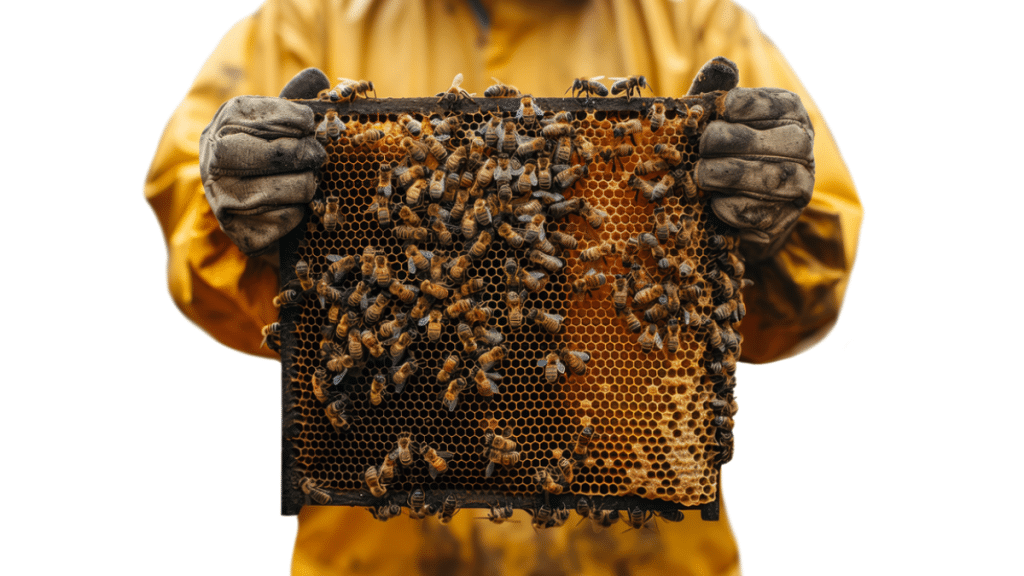Honey production is one of nature’s most intricate and fascinating processes. Bees, small yet incredibly industrious insects, work collectively to produce pure honey, a nutrient-rich food source with an impressive shelf life. This transformation from flower nectar to the golden sweetness we know is nothing short of remarkable. Every step, from nectar collection to the capping of honeycomb cells, is a testament to the ingenuity of these tiny creatures.
Beyond being a delightful addition to our diets, it is also a cornerstone of the bee colony’s survival strategy, underscoring its importance in nature. Furthermore, its versatility extends beyond its use as a sweetener, finding applications in medicine, skincare, and preservation. If you want to enjoy more premium honey variations, you should go for Best Tupelo Honey from an authentic retailer.
Honey Making Process
Nectar Collection
The production of honey begins with forager bees collecting nectar from flowers. These bees, usually at least 21 days old, are equipped with long, straw-like tongues called proboscises. Using their proboscises, they extract nectar, a sugary liquid secreted by plants to attract pollinators.
- Key Features of Nectar:
- High water content (70-80%)
- Contains sugars like sucrose, glucose, and fructose
Once collected, the nectar is stored in a specialized organ called the honey stomach or crop. This temporary storage compartment allows bees to carry nectar back to the hive without digesting it. Each forager bee can carry up to half its body weight in nectar, often visiting over 1,000 flowers to fill its stomach.
Enzymatic Transformation During Transport
While still inside the forager bee, the nectar undergoes its first transformation. Enzymes such as invertase begin breaking down complex sugars into simpler ones like glucose and fructose. This enzymatic activity also lowers the pH of the nectar, creating an acidic environment that helps inhibit bacterial growth.
This initial processing ensures that the nectar is already partially converted into honey-like substances before it even reaches the hive.
Role of House Bees
Once the forager bee returns to the hive, it passes the nectar to younger worker bees, known as house bees. This transfer occurs through regurgitation, a process that may sound unappealing but is crucial for honey production.
- Steps in House Bee Processing:
- House bees ingest and regurgitate the nectar multiple times.
- Each regurgitation adds more enzymes, further breaking down sugars.
- The nectar is aerated as bees create bubbles between their mandibles, increasing the surface area for evaporation.
This “chewing” process typically lasts 20-30 minutes per bee, preparing the nectar for the next phase of dehydration.
Dehydration
Dehydration is a critical step in converting nectar into honey. Bees spread the processed nectar into the honeycomb cells, creating a thin layer that maximizes exposure to air. They then fan their wings vigorously to generate airflow, accelerating evaporation.
- Key Factors in Dehydration:
- Hive temperature: Around 35°C (95°F)
- Reduction of water content: From 70-80% to 17-18%
This step not only thickens the nectar but also ensures that the final product is less prone to microbial growth due to its low water content.
Ripening and Storage
Once the nectar reaches the desired consistency, it is officially considered honey. Bees then pack this honey into the hexagonal wax cells of the honeycomb. To preserve it, they seal the cells with a thin layer of wax. This capping process prevents further evaporation and protects the honey from contamination.
- Composition of Honey:
- Fructose: 38%
- Glucose: 31%
- Water: 17%
- Other sugars and compounds: 14%
These proportions create a supersaturated solution, making honey an inhospitable environment for most microorganisms.
Why Honey Production Matters
The meticulous process of its production serves purposes beyond providing a sweet treat for humans. For bees, it is an essential food source, particularly during winter when flowers are scarce. The stored honey provides the necessary energy to sustain the hive through harsh conditions.
For humans, it has been a treasured natural sweetener and medicinal aid for centuries. Its antimicrobial properties and long shelf life make it a versatile ingredient in cooking, skincare, and traditional medicine.
- Key Benefits of Honey for Bees and Humans:
- Sustains bees during non-flowering seasons
- Offers a natural energy source for humans
- Contains antibacterial and antioxidant properties
Ecological Importance of Bees
Bees’ role in honey production is just one aspect of their ecological significance. These pollinators play a vital role in maintaining biodiversity and ensuring the reproduction of many flowering plants. The health of bee populations directly impacts ecosystems and food security globally.
- Key Contributions of Bees to Ecosystems:
- Pollination of crops and wild plants
- Preservation of plant diversity
- Support for other wildlife dependent on flowering plants
Efforts to protect bee habitats and reduce threats such as pesticide use and habitat destruction are essential for sustaining not only its production but also the broader ecological balance.
Conclusion
Pure honey is a testament to the complexity and efficiency of nature. From the diligent nectar collection by forager bees to the precise enzymatic transformations and dehydration processes, every step highlights the extraordinary capabilities of these tiny creatures. This intricate process not only sustains bee colonies but also enriches human lives with one of the most cherished natural products. Explore more options for pure honey at Smiley Tupelo Honey.
